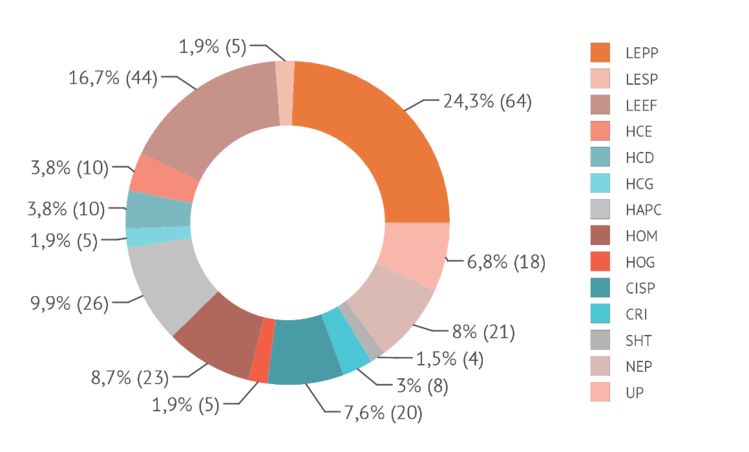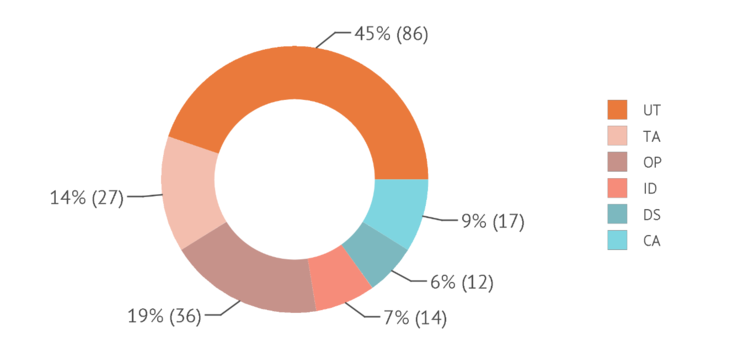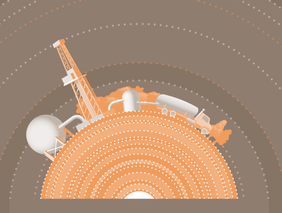Gas hydrates are one of the most attractive forms of energy commodities for the future thanks to the huge resource potential that is many times larger than all other existing fossil fuel resources put together. A great number of scientific papers are published annually all over the world, dedicated to the analysis of gas hydrate formations in different geographical regions of the world, to the perfection of scientific research methods, as well as to the technological aspects of gas hydrate exploration and extraction. Also, specialists in various technological areas such as chemical production or pipeline gas transport are continuously intrigued by the problem of gas hydrate build-up as an adverse by-product. However, engineering achievements in the development of main technological operations for exploration and production of methane from gas hydrates aren't that great and the volume of patent documentation here is noticeably lower compared to other related topics in the oil and gas industry.
The present paper represents the results of analysing 162 patent applications published in 2017, in 14 patent offices around the world by 72 applicants from 13 countries.
Distribution of patent applications, published by the top 10 patent offices
| Patent office | Number of documents | Share of total, % |
|---|---|---|
| State Intellectual Property Office, China | 72 | 44.4 |
| United States Patent and Trademark Office | 31 | 19.1 |
| World Intellectual Property Organization | 16 | 9.9 |
| National Institute of Industrial Property, Brazil | 15 | 9.3 |
| Canadian Intellectual Property Office | 5 | 3.1 |
| European Patent Office | 5 | 3.1 |
| Federal Service for Intellectual Property, Russia | 5 | 3.1 |
| Mexican Institute of Industrial Property | 3 | 1.9 |
| Japan Patent Office | 3 | 1.9 |
| Eurasian Patent Organization | 2 | 1.2 |
| All other offices | 5 | 3.1 |
.(Natural environment protection measures). Another problem, related to the ecological aspects, was also in the focus of attention of the inventors (High OPEX/Maintenance, High additional production costs). Beyond that, the inventors quite frequently addressed the problems of high operational costs and additional production costs in various phases of technological processes (Low efficiency of primary processes, Low efficiency of secondary processes)In the majority of cases the inventors in their patent applications approached the issues of low efficiency of primary and secondary processes in exploration, activation of gas hydrate formations and methane production there from
The number of patent applications found this year is slightly lower in comparison with the previous year, although this, along with other factors, is related to both the later dates of official publication of patent documents and to the general reduction of patenting activity. It is also worth noting that there are certain difficulties in searching for documents relevant to the present industry in patent databases by using major key words as they are broadly used in various industrial sectors, not directly related to the methane production from gas hydrates.
As can be seen from the table above, almost half of the applications were filed in the Chinese patent office and about 20% in the US patent office. Surprisingly, quite a number of patent applications were also filed in the Brazilian patent office, while research activity in this region is not that extensive as, for instance, in such regions as the Gulf of Mexico, Tibet or Alaska.
Distribution of technical problems in the patent applications found

LEPP-Low efficiency of primary processes; LESP-Low efficiency of secondary processes; LEEF-Low efficiency of exploration and forecasting; HAPC-High additional production costs; HCD-High CAPEX/Development; HCE-High CAPEX/Exploration; HCE-High CAPEX/Exploration; HCG-High CAPEX in general; HOG-High OPEX in general; HOM-High OPEX/Maintenance; CISP-Clathrate-induced seismic processes; CRI-Clathrate release impact on climate; NEP-Natural environment protection measures; SHT-Safety and health threats; UP-Unclear problem
historically are present among the most frequently mentioned engineering solutions, which is seen in the chart below. However, in almost 65% of documents unconventional variants of activation technical solutions were disclosed that seemed to be impossible to incorporate into standardized groups.Thermal activation, Chemical activation, Injection and displacement, and Depressurizationechnological process of methane extraction from gas hydrates is unavoidably associated with some specific procedures of gas hydrate formation activation, which is necessary to release methane from the bound state. T
Gas hydrate activation methods represented in the patent documents

CA-Chemical activation; DS-Depressurization; ID-Injection and displacement; OP-Other physical actions; TA-Thermal activation;
UT- Unspecified technology
In most cases the inventors proposed technical solutions in the form of different devices, considerably less often in the form of production methods, and only in 17 documents were new compositions disclosed.
The most widely used IPC group (as defined by the World Intellectual Property Organization) was E21B0043 - Methods or apparatus for obtaining oil, gas, water, soluble or meltable materials or a slurry of minerals from wells, whose share almost reached 40%.
More detailed information on the methodology as well as on the results of patent researches in the most important fields of contemporary energy industry can be found at www.aenert.com
